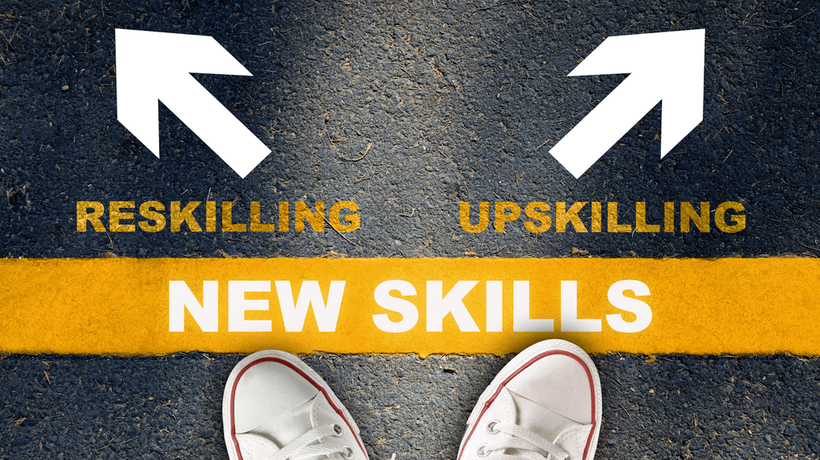Ensure Your Employees Are Future-Ready
In the wake of the new normal, many employees are realizing the need for additional skills and training in order to support new changes to how work is done. Moreover, employees and employers alike are recognizing the need to help workers develop these skills to ensure they’re future-ready.
In a recent McKinsey Global Survey [1], 58% of surveyed employers stated that closing the skills gap within their workforce has become a top priority since the pandemic started. The same report found that 69% of respondents are currently doing more skill-building than they did prior to COVID-19.
With over half the workforce (54% according to the World Economic Forum) needing reskilling or upskilling, the majority of organizations are transforming their current training programs and adopting a skills-based learning approach. The priority for this new approach is ensuring employees have the skills necessary to face a rapidly changing corporate environment.
Learning Priorities Have Shifted
Today’s business environment is becoming increasingly complex, ambiguous, and uncertain. For employees to thrive in these challenging conditions, employers must focus on teaching them the skills that are suited for a fluctuating business environment.
“In a future-ready organization, ‘talent’ is increasingly a metaphor for capability—at the right place, at the right time and equally, at the right price.”― Gyan Nagpal, The Future Ready Organization: How Dynamic Capability Management Is Reshaping the Modern Workplace
McKinsey [2] suggests four key skills areas employers would do well to focus on in order to resolve employee weaknesses that were recognized both before and during the COVID-19 crisis. These include:
- Digital fluency
Every employee should have some degree of technical skill to ensure they can easily (and comfortably) work in an entirely remote environment if necessary. - Cognitive skills
Working in a remote environment has created the need for enhanced cognitive skills such as problem-solving, creativity, redesign, and innovation. - Emotional intelligence
Strong communication and interpersonal skills as well as empathy are needed to create and grow professional relationships despite working in a remote environment. - Resilience and adaptability
As the aftershocks of COVID-19 continue to ripple throughout the workforce, workers must have the resilience and adaptability to quickly respond to changes in a calm, confident way. Additionally, these skills are useful in teaching workers to manage their time and mental health responsibly.
Employers must focus their efforts on ensuring employees have these future-proof skills. For many, this means shifting away from knowledge-based learning and adopting skills-based learning.
Skills-Based Learning Creates Tomorrow’s Employees
Since the outbreak of the coronavirus, LinkedIn has reported a “21% increase in job postings advertising skills and responsibilities instead of requirements and qualifications in the US.” Additionally, the number of job postings that don’t require an educational degree has increased by 40% in 2020 as compared to 2019.
These numbers indicate that many companies are starting to become more intentional about hiring a candidate based on their future potential rather than their past. Focusing on the skills an employee brings to a job enables employers to increase the size of their talent pool and find high-quality applicants for hard-to-fill roles. Additionally, employers who adopt a continuous learning culture have happier, more fulfilled employees who remain with a business longer.
Companies looking to move beyond the outdated knowledge-based learning and toward skills-based learning should follow the following steps:
- Identify skill gaps and specific organization needs
- Take an inventory of current and future position goals
- Build fluent career paths
- Keep the learner involved in the process
- Monitor progress, adapt learning, and quantify impact
Additionally, companies must utilize a learning platform in order to track progress and identify needs. It’s with these platforms that employees are provided with the tools and resources necessary to develop skills.
While the long-term effects of COVID-19 are still playing out, many companies are at a crucial crossroads in terms of developing employee talents and skills. By adopting a skills-based learning method, organizations create a continuous learning environment that ensures employees are "future-ready." Now is the time for employers to invest in this approach or risk potential future growth.
References:


